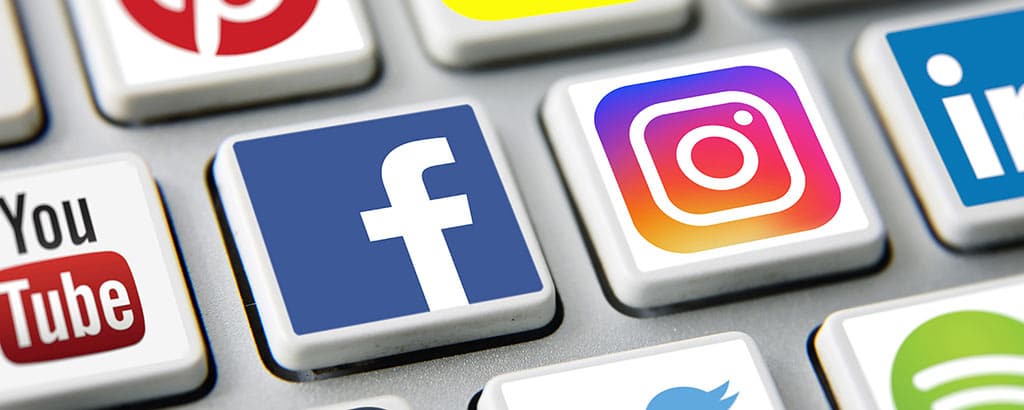
This is probably the most exciting time in the world of advertising. The landscape of business advertising has changed dramatically over the years, and digital advertising has taken the lead in accessibility, impact, and ROI over more traditional methods, like television, print publications, or radio.
In the business world, you know you have to stay at the top of your game if you want to remain a step above your competitors. With advertising, it’s no different. That’s why you need to build an effective ad strategy that speaks directly to your target audiences and authentically showcases your brand, your story, and your products or services.
Have you adapted your advertising strategy to reflect current digital trends? Are you talking to the right people, in the right ways, and in the right places? It’s time to revisit your advertising game plan to reach maximum effectiveness for your budget.
THE STATISTICS SPEAK FOR THEMSELVES
The global spend on advertising is 500 billion, and the average American is exposed to between 4,000 – 10,000 ads per day. It all speaks to advertising’s huge impact. Whether they are watching a video on social media or browsing through their local supermarket aisles, people are receiving advertising messages in all areas of their life and from all directions. The key to your effective and impactful campaign lies in making sure you rise above the fray.
HOW HAS ADVERTISING CHANGED OVER TIME?
In the “golden age” of advertising, television and radio were it. Most ads used a direct sales approach, often delivered by iconic characters and celebrities who personally endorsed whatever it was they were selling.
Fast forward to the age of the internet – where audiences are increasingly savvy and even more cautious when it comes to hard-sell tactics. While celebrity endorsements are still popular, advertising now focuses on influencing, selling the brand and by associations and through demonstrating values, rather than selling the product alone. More businesses are aiming to build relationships with audiences, instilling long-lasting trust and loyalty.
Effective advertising today is far more complex than telling someone that your product exists and that they need to buy it. Consumers want to relate to a brand, believe its authenticity, and know that it provides solutions to their problems.
WHAT YOU NEED BEFORE STARTING AN AD CAMPAIGN
The more prepared you are, the better your campaign will be. So, get ready to do some serious work (but know that we have your back!).
There are six steps of preparation that you need to complete. Skipping just one component of the process could prove to be a missed opportunity and a costly mistake..
- Establish clear goals and objectives – If you don’t know exactly what you want to achieve, how do you know what success looks like?
- Define your audience – Who do you want to reach with your campaign?
- Build your buyer persona, a fictional representation of your ideal customer.
- Set a schedule and budget—Make sure it is realistic and achievable.
- Choose your media—Where are you going to advertise?
- Create your campaign message—Get ready to speak directly to your audience with a powerful statement.
Each component requires you to have a solid understanding of how to implement and measure your success. That’s why our free eBook, “What you need to know about advertising… before you start,” covers each step in detail. Check it out!
TRADITIONAL VS. DIGITAL ADVERTISING
While digital advertising is on a meteoric rise, don’t entirely rule out using traditional methods. People still watch television, listen to the radio, and read print publications. Depending on your product or service, a sole focus on digital runs the risk of alienating some of your audience—which could do your brand more harm than good.
A blended approach of mixing some digital advertising with some traditional methods ensures you cover your entire audience and achieve maximum exposure. A television ad directing customers to a sale on your website or a social media ad containing a coupon to use in-store are examples of blending the old with the new.
HOW TO SET A BUDGET
If you don’t set a realistic budget from the start, you are putting yourself at risk of getting carried away and spending much more than your business can afford. And this will be catastrophic if the campaign doesn’t have the desired effect.
Protect yourself by setting a reasonable budget using a tried and true technique. The size of your business, as well as how long you have been in business will determine which of these methods will work best for you. Here’s a formula to help you get started.
- Take last year’s gross sales and allocate a percentage of that figure as your advertising budget. A typical amount is between 2 and 5%.
- Multiply how much a product costs by how many units you want to sell. For example, if an item costs $1.00, and you want to sell 500 of them, the budget would equal $500.
- Look at your marketing objectives and determine the costs of meeting them. If you can’t afford to do everything, prioritize the most important ones.
- Use your industry standard, which can be useful if you have predictable sales patterns.
CHOOSING THE BEST ADVERTISING CHANNELS FOR YOUR CAMPAIGN
A diverse range of advertising channels tempts advertisers to aim for a presence on all of them. This is not the right tactic though, since it will water down your message to the point of being completely ineffective—as well as completely blowing your budget. The best strategy is to choose a few channels that you know will have the biggest impact.
Study your target audience, their buyer’s journey, and your own goals to help you narrow down the channels that are going to work best for you.
HERE ARE SOME OF THE MOST COMMON CHANNELS:
- TV
- Newspapers and magazines
- Product placements
- Radio
- Billboards and outdoor advertising
- Leaflet drops
- Sponsorships
- Digital
- Social media ads
- Website ads
- Sponsored content
- Viral videos
- Influencer endorsement
THE BUYER’S JOURNEY
Before you start creating ads, you need to understand a few essential elements of advertising to your audiences, starting with how a customer goes from knowing they need something to making an actual purchase. This is known as the buyer’s journey, and you’ll want to consider impactful content that resonates with each stage.
- Awareness stage – The buyer becomes aware they have an issue that they need to solve. They begin researching information. Blogs, infographics, eBooks, and studies are all effective for this stage.
- Consideration stage – The potential customer has finished gathering information and is now considering options. They are likely to look for resources, such as podcasts, expert guides, tips and tricks posts, and videos to help them move toward their decision.
- Decision stage – Your potential customer is ready to buy. Take the opportunity to highlight the customer’s “pain points” and demonstrate how you can solve these problems.
Understanding the buyer’s journey will help you determine what kind of content you need to write and produce. Whether you’re putting out blog articles, an expert guide, or inspiring social media posts, your content must resonate with your audience so that they take notice and take action.
WRITING EFFECTIVE AD COPY
A compelling message will get your customer moving through your sales funnel, but getting it right is harder than it may seem. Use the guidelines below to create messaging that speaks directly to your audience—telling them what they need to know to make a purchase.
- Know your audience – Adapt your content style and tone to suit your audience. You might adopt a more formal tone for business professionals, while you can keep things fun and casual for a younger audience
- Create a “hook” – An advertising hook captures the attention of the audience and aims to hold on to them. This should be a short phrase, statement, tagline, or jingle that aligns with your brand.
- Trigger emotions – An ad campaign that triggers strong feelings is far more effective than a bland advertisement that reels off facts and figures. Think about what will create an emotional reaction in your audience.
- Consider your medium – In general, lengthy text doesn’t work for social media posts. And your fantastic meme ideas won’t go viral in printed publications. Think about your chosen mediums and develop appropriate copy for each one, rather than using the same text for each medium.
THE MOST EFFECTIVE AD COPY TENDS TO BE STRUCTURED IN THE FOLLOWING WAY:
- Headline – We’re amazing!
- Subheading – Our amazingness can solve your problem!
- Body – Here are the details on why we’re amazing!
- Call-to-action – Buy into our amazingness!
BE PERSUASIVE
Working emotion, logic, credibility, and values into your ad campaign can help you grab the attention of your target audience and trigger a strong response. That’s known as persuasive advertising, and it’s used to invoke a strong emotional reaction. Some popular tools include:
- Repetition break – Create the element of surprise by using a series of repetitive or similar sequences followed by a completely different scene.
- Shock – Used appropriately and sparingly, high shock value in advertising can be extremely effective.
- Humor – Jokes and funny situations are memorable and also have the potential to go viral.
Other persuasive tools include using celebrity endorsements and product placements. The use of music and colors are also powerful tools.
The chances are high that you’re already very familiar with most persuasive advertising elements:
- Authority – Listen to me, because I’m the expert.
- Reason – Here are the solid facts.
- Emotion – When you buy this, it will make you feel safe/happy/adventurous.
- Trust – Believe me, I’m honest.
- The average person – I’m just like you.
- Bandwagon – Everyone is doing it, why aren’t you?
- Rhetorical questions – Why wouldn’t you want to do this?
- Repetition – I tell you what I’m going to say. I say it. Then I tell you what I said.
INCREASE YOUR BRAND CREDIBILITY
No one is going to buy from you if they don’t believe in your brand. Therefore, establishing brand credibility and trust is vital for any business looking to implement a successful ad campaign. Modern consumers no longer trust direct sales tactics. Focusing on brand awareness rather than increasing sales is a more effective route to making lasting connections with your audience.
CONSIDER USING THE FOLLOWING TACTICS TO BUILD YOUR CREDIBILITY:
- Offer expert advice, tips, and information.
- Provide solutions to the issues your audience faces.
- Host, sponsor, or support charitable events relevant to your industry.
- Sponsor and support community events and local activities.
Once people see your brand as trustworthy, you can gain a fiercely loyal customer base that will support and even defend your brand. Improving your brand credibility and building a strong following takes longer to establish than other methods, but it is worth far more than a brief flurry of increased sales.
SOCIAL MEDIA ADVERTISING
Americans spend almost 24 hours per week on social media, making this an advertising platform you cannot ignore. Social media’s vast global audience can be targeted and refined to reach your ideal customer directly and it’s often less expensive than more traditional methods—meaning you can stretch your budget further.
HERE ARE A FEW THINGS TO KEEP IN MIND WHEN USING SOCIAL MEDIA IN YOUR AD CAMPAIGNS.
- Hard-sales tactics do not work on social media.
- Concentrate on building a relationship with your target audience.
- Use a variety of methods. Blogs, articles, videos, viral ads, and influencers are just some of the ways you can attract and hold the interest of your audience.
TARGETING CUSTOMERS ON SOCIAL MEDIA
Social media has come a long way since Facebook first emerged. Now, you can harness the power of sophisticated algorithms that pinpoint your ideal customers. If you’ve already established what your buyer’s persona looks like, you can use social media to target the right people for your ad campaign.
One of the best things about targeting on social media is that you can adjust the settings as you go. This means that you can refine your targeting mid-campaign if you find something isn’t working as well as you hoped.
IS FACEBOOK ADVERTISING WORTH IT?
Of all the social media platforms, Facebook is by far the largest—with more than a third of the world’s population as users. Aside from its huge user-base, Facebook has a range of benefits that makes it easy, effective, and affordable to advertise on its platform.
- The platform continually evolves and adapts to stay current and user-friendly.
- It works seamlessly on a range of devices.
- It allows you to target your ideal customer with extreme precision. Among other criteria, you can target people in specific groups or aim your ads at people who have demonstrated a particular interest.
- Ads appear prominently in newsfeeds and adapt to how people use Facebook. This means each ad experience is unique to the user.
- You can refine or adjust your targeting options to gain a better audience reach.
- It’s cost-effective and you can set a maximum daily spend, so you don’t inadvertently go over budget.
NATIVE ADVERTISING – WHY IS IT BENEFICIAL?
Native advertising is another digital advertising tactic that doesn’t look or feel like traditional digital advertising because it is incredibly subtle. And, it can be extremely effective.
Most web users consider banner ads that flash up on a web page to be a nuisance. So, fewer and fewer people click on them. Instead, imagine that that brand has created a useful piece of content that answers questions and provides real value. That’s known as native advertising.
Native advertising provides useful and informative content that appears on related web pages. For example, if you’re browsing a website about make-up tips, a video might appear that demonstrates eyeshadow techniques. The whole point of native advertising is to create an ad that matches its context. Instead of interrupting the user experience, it is used to enhance it.
Native advertising can lead to a much higher click-through rate than intrusive ads. This tactic can also lead to a stronger recall when it comes to your brand since consumers don’t view it as a hard-sell.
MOBILE ADVERTISING
Just about everyone has a smartphone these days. Unlike a television or a newspaper, people tend to keep their mobile device on them at all times, which makes mobile phones the perfect tool for direct advertising.
THERE ARE SEVERAL VERY EFFECTIVE WAYS TO INTEGRATE MOBILE ADVERTISING INTO YOUR STRATEGY.
- Video ads – These are integrated into apps, and display when someone uses the app with which the video is associated. Videos have an excellent click-through rate.
- Gamified ads – A fun mini-game or interactive experience, designed to increase engagement.
- Full-screen mobile ads – These fill the entire mobile phone screen. While they tend to have better engagement than smaller ads, the downside is that some people find them irritating.
- Native mobile app ads – Ads that are integrated into the platform on which they appear and don’t interrupt the user experience.
HOW E-COMMERCE ADVERTISING CAN INCREASE STORE SALES
Using advertising to drive people to your e-commerce store is a great way to increase visits and build up your bottom line. But your strategy needs to be executed well to reduce the potential for costing you more than you make in sales.
HERE IS ARE SOME WAYS TO USE E-COMMERCE ADVERTISING TO BOOST STORE SALES:
- Make sure your website is up-to-date and looks great—If your website is slow or performs poorly, if it looks outdated, or if it doesn’t feature the information people need, you’ll lose visitors. Make sure your website looks great before you start driving traffic to it through advertising.
- Invest in paid traffic—Pay-per-click advertising via Facebook, Google, or other well-known platforms drive people to your website. Test the waters by investing small amounts at first, then increase your ad spend gradually based on how audiences are responding.
- Show that you can be trusted – Trust badges, logos, and emblems are vital for securing consumer confidence. For example, people tend to trust a site more if the Paypal logo is displayed, rather than an obscure money transfer service that few people have heard about.
- Keywords are critical – Create keyword-rich copy that SEO and analytic tools love. This is crucial for showing up in search engine results.
- Pair products – How about a bag to go with those shoes? A set of headphones for that mobile device? Pairing products allows you to cross-sell items that go together.
DO RETARGETING ADS WORK AND ARE THEY EFFECTIVE?
Most website visitors don’t convert to becoming a customer on their first visit, and 98 percent won’t buy right away. So, think about how you’re going to remind visitors of your products and get them to return to make a purchase. That’s where retargeting ads come in.
Website cookies are like little pieces of data that stick to a person once they’ve visited a website. They follow that person around the internet. These cookies are what drive retargeting ads.
For example, imagine that someone has just been browsing your website and looking at security devices you offer. If they leave your site without making a purchase, you can lure them back by using the information in your tracker cookies. With retargeting ads, your potential customer will start to see ads for your security devices on some of the subsequent sites they visit.
This advertising strategy reminds the customer of your brand and reinforces their intention to buy. Make sure you have a clear call-to-action within the ad and consider showing a promotion or coupon to entice the consumer further.
HOW TO MEASURE THE ROI OF YOUR ADVERTISING CAMPAIGN
You’ve got your ad campaign set up and ready to roll, but how are you going to know if it’s given you a decent return on investment (ROI)?
If you’ve done the groundwork and established clear goals for the campaign, you’ll already know what the measures for success are. Now you need to determine the metrics.
THREE USEFUL METRICS ARE:
- Cost per click
- Cost per acquisition
- Cost per thousand ad impressions
TO CALCULATE YOUR ROI, USE THIS EQUATION:
ROI = (Gain from Investment – Cost of Investment)
Another way to measure your success is by calculating your return on ad spend (ROAS). This method is particularly relevant for digital advertising campaigns. You can find your ROAS by taking your ad spend and dividing it by revenue.
HOW TO SELECT THE RIGHT AGENCY FOR YOUR BUSINESS
Advertising is a crucial investment for your business. Calling in the experts will give you the peace of mind you need that your ad campaign will be as effective as possible, and you’ll stick to your budget.
HERE ARE SOME TIPS FOR FINDING YOUR PERFECT MATCH WITH AN AGENCY.
- Look at an agency’s advertising strategy. Impressed? If they can’t advertise themselves effectively, think twice about their ability to do a good job for you.
- Find an agency that looks like they’ve been around long-term and encourages your business growth by finding new markets, audiences, products, or services.
- Look for an agency that shares your values and ethics. Otherwise, issues that are important to you may not be meaningful to them.
- Ask plenty of questions about how they are and how they work—and how they’ll work with you.
Great advertising campaigns begin with a solid foundation of planning and preparation. They achieve great results through precision targeting on the best channels for your business.
Take your time to approach each step with a thorough understanding and strategic execution, and you’ll reap the benefits in reaching new audiences and revitalizing your brand. For practical advice about creating an advertising campaign that stands out or to boost your advertising with help from our expert team, reach out to C-leveled today.
What You Need To Know About Advertising
Download C-leveled’s free guide full of expert, insider advice on everything you need to know about advertising before you get started. Blow your competition out of the water instead of blowing your budget.







